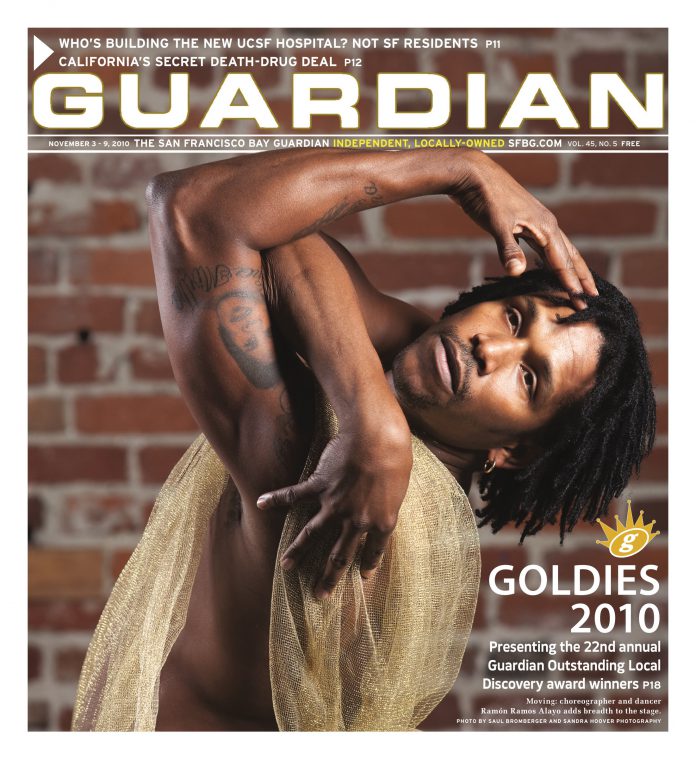In her pieces, Jennifer Locke has, variously, jumped rope for 30 minutes in a full-body latex suit (cutting out a hole in the bottom afterward to drain out her accumulated sweat and urine); wrestled with a partner at the Berkeley Art Museum smeared in stage blood; covered herself in Elmer’s glue, let it dry into a second skin, and then peeled it off; received a lap dance from a male stripper; and branded a fellow participant.
Granted, reducing Locke’s art to such a titillating laundry list is a superficial move. But the immediate visceral spectacle her work repeatedly presents is undeniably seductive — albeit in a punk rock kind of way. It’s hard not to be pulled in by the grappling, athletic bodies, the donning and shedding of second skins, all frequently soundtracked by the amplified breath of the participants themselves, even if it sometimes causes one to flinch.
Locke, who has spent considerable time working as a pro dom and is herself a champion submission wrestler, is keenly aware of her art’s initial draws. “Yeah,” she laughs over the phone, “athletic bodies are inherently sexy. It’s in our nature as human beings to want to look. But I want there to be a barrier between the audience and the image of the body.”
In Locke’s work, which she describes as a sculptural hybrid of live studio actions and video, the camera often provides that layer (or more often, layers) of mediation. Locke strategically uses video within her pieces to alter the on-site audience’s expectations and perceptions of what’s occurring in front of them, as well as those of viewers encountering the pieces as video documents after the fact.
Whatever erotic or transgressive charge a viewer may have invested in the actions being performed becomes rewired through the camera set-up, or is short-circuited entirely. As critic Daniel Coffeen has noted of Locke’s work: “She does not dabble in human affect but in human mechanics.”
In the aforementioned BAM piece, Red/White (Fake Blood), Locke and her wrestling partner sparred in the museum’s loading bay, their actions relayed to the audience via a live video feed that, due to technical difficulties, wound up being projected in black and white. The door to the dock, however, was left slightly ajar so anyone who wanted to see the “real event,” and the piece’s “true colors,” could — although no one was ever specifically directed to.
In Black/White, a three-day piece done as part of the opening of the San Francisco offices of the Marina Abramovic Institute of Performance Art, Locke placed the camera filming a live feed of her actions so that it encompassed those viewing her as well, then projected that image on a rear wall so the audience could observe either Locke’s action or the projection of themselves watching Locke’s action, but not see both simultaneously.
“I used to talk a lot in my artist statement about power dynamics, but then I realized over time that I’m more interested in how meaning gets produced,” she says. “Power is a means to talk about that, but I want to know how those hierarchies actually shift around in reality: Who’s in control? Am I? Is the camera? Is the audience? My work is like a three-card monte.”

